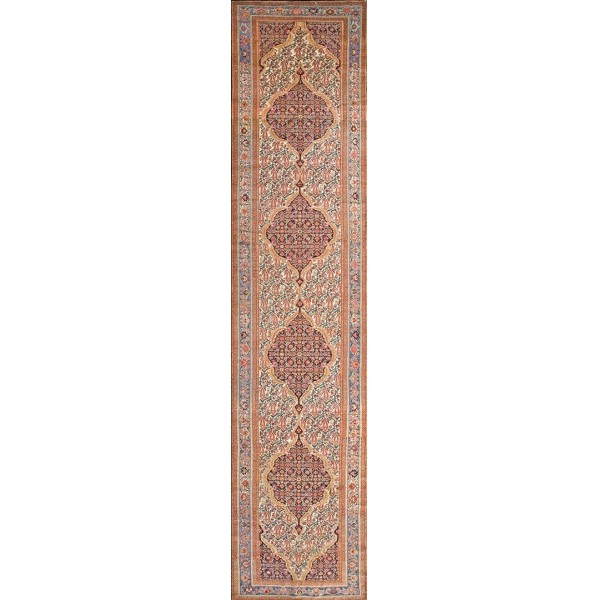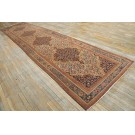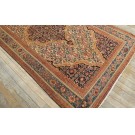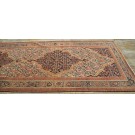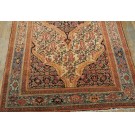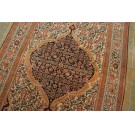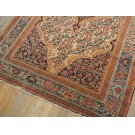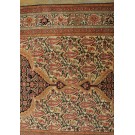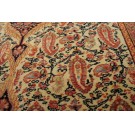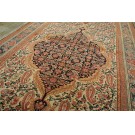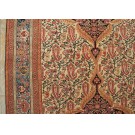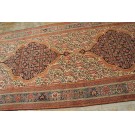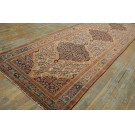19th Century Persian Mishan Malayer Carpet
Malayer Antique Runner 3.10 x 17.3 Botehs and herati.Ecru and black. A repeat of of characteristic leaf-edged ogival Malayer medallions filled with an urban version of the classic herati pattern lightly sets on a brocaded textile version of the boteh (paisley) design in this attractive, finely woven, single wefted c. 1870 Malayer wide runner with an border abrashing from powder blue to sky blue. This is a well conceived and executed town Malayer.
| Stock ID: | #20163 |
| General Rug Type: | Persian Formal |
| Specific Rug Type: | Mashad |
| Circa: | 1870 |
| Ground Color: | Other |
| Origin: | Persia |
| Width: | 3' 10" ( 117 cm ) |
| Length: | 17' 3" ( 526 cm ) |
DescriptionMashadThe largest city in Khorassan Province, northeast Iran. The carpet industry there is a late 19th century creation of relocated Tabriz merchants. Both Turkish (Turkhaff) and Persian-(Farsihaft) knotted rugs are produced in large sizes up to 20 x 30, in rich colors including a mulberry. Red designs are strictly curvilinear and often large animals and birds appear. Open fields with medallion and corner ornamentation are common. The texture is thick and heavy. The use of jufti knots allows rapid production. In the 20th century, several renowned workshops (Emogli, | |
| Tearsheet Download | |
